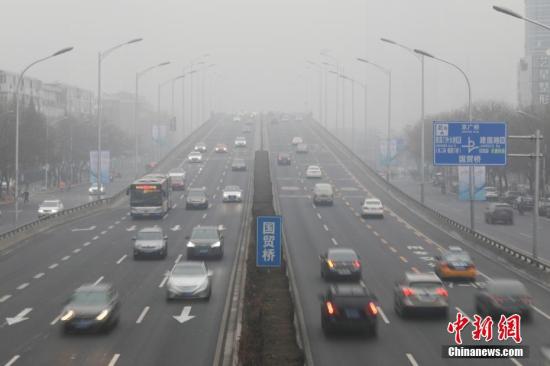China News Service, Beijing, October 31 (Reporter Ruan Yulin) According to the news from China’s Ministry of Ecology and Environment on the 31st, according to the latest atmospheric environment monitoring data and forecast results, due to the impact of the strong northwest cold air passing through the border, sand and dust weather on October 30 At night and on the 31st, it affects North China and Northeast China.
The air quality in Beijing, Tianjin, Tangshan and other places is heavily polluted.
Data map: The vehicle is driving in the haze.
Photo by China News Agency reporter Jiang Qiming
From October 30 to 31, the sand and dust process successively affected central and eastern Inner Mongolia, Shanxi, Beijing-Tianjin-Hebei, Henan, Liaoning, Jilin, Shandong and other places.
Short-term severe and above pollution occurred in the central and eastern Inner Mongolia, central and northern Shanxi, and central and northern Beijing-Tianjin-Hebei areas affected by the sand dust process. Liaoning and western Jilin were mainly polluted by short-term moderate to severe pollution, and southern Hebei, northern Henan, and Shandong Mainly light to moderate pollution.
Monitoring showed that due to the northwestern sand and dust process and the northerly wind behind the low-pressure trough, Beijing's inhalable particulate matter (PM10) reached a severe pollution level at 12 o'clock on October 31, reaching a peak of about 473 micrograms per cubic meter at 13:00, and the subsequent concentration Decline.
It is estimated that by the evening to night of the 31st, sand and dust will gradually pass through the border and PM10 concentration will decrease.
The forecast shows that on November 1st, as the sand and dust move to Eastern China, it is expected that there will be short-term light pollution in the eastern and western parts of China. The Beijing-Tianjin-Hebei and surrounding areas are affected by the residual dust, and it is expected that some cities may experience light pollution. .
(Finish)

